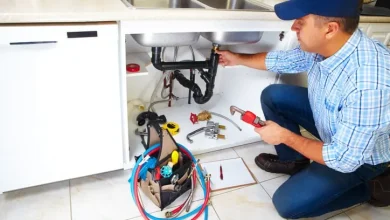How Rainwater Tanks in Melbourne Can Help Manage Urban Flooding

While urban planning and engineering play a key role in managing these risks, property-level solutions are just as critical. Among the most effective of these are rainwater tanks in Melbourne, which offer benefits far beyond just water conservation.
The Urban Flooding Challenge
Melbourne’s layout includes a large number of paved surfaces—roads, footpaths, rooftops, and driveways—that prevent water from naturally soaking into the ground. During storms, rain runs off these impermeable surfaces and overloads the city’s drainage systems. This often results in flash floods, especially in low-lying suburbs or areas with aging stormwater infrastructure.
Increased rainfall intensity, partly driven by climate change, has further worsened the problem. Local councils and water authorities are actively investing in large-scale infrastructure upgrades, but these efforts are expensive and time-consuming. In the meantime, decentralized solutions like rainwater tanks in Melbourne offer a way for individual property owners to contribute to reducing flood risks.
How Rainwater Tanks Help with Stormwater Management
When installed correctly, rainwater tanks in Melbourne serve as mini-reservoirs that intercept rainwater before it becomes runoff. Instead of rain hitting a roof and immediately entering the stormwater system, it’s redirected into a storage tank. This reduces the volume of water entering public drains during heavy rainfall, easing pressure on stormwater infrastructure.
By temporarily holding this water and slowly releasing it later (either through use or overflow), rainwater tanks can help prevent flash flooding and erosion. They are particularly effective when combined with other sustainable urban drainage systems (SUDS) like rain gardens, permeable paving, and detention basins.
Local Government Support for Water-Sensitive Design
Several councils in Melbourne actively encourage the use of rainwater harvesting systems as part of water-sensitive urban design (WSUD) strategies. These initiatives aim to create urban environments that closely mimic natural hydrology. For example, councils like Moreland, Yarra, and Maribyrnong have integrated policies that promote rainwater tanks in Melbourne for both new developments and existing homes.
Some planning permits even require the inclusion of tanks or other runoff management systems to ensure new constructions don’t add to the flooding burden. Additionally, water authorities such as Melbourne Water provide guidelines and support for residents and developers to implement effective stormwater management systems.
Designing Rainwater Tanks for Maximum Impact
Not all rainwater tanks are equal when it comes to flood mitigation. To maximise their effectiveness, tanks should be sized and installed with stormwater diversion in mind. Larger tanks are better suited for this purpose, as they can handle more rainfall in a single event. However, even small tanks can make a difference if used wisely.
Key features to consider include first flush diverters, overflow outlets directed to garden areas (rather than stormwater drains), and slow-release mechanisms that gradually disperse excess water after the rain has passed.
Underground tanks are especially useful in built-up urban areas where space is limited. These systems can store large volumes of water without taking up visible space, making them suitable for both residential and commercial developments.
Multi-Benefit Infrastructure for a Resilient Future
The beauty of rainwater tanks in Melbourne is that they serve more than one purpose. While their role in flood management is vital, they also provide a source of non-potable water that can be used for irrigation, toilet flushing, laundry, or even firefighting in rural-urban fringe zones.
In effect, property owners who install a tank are not only protecting their own property from flooding but also contributing to the city’s broader climate resilience goals. When used at scale, thousands of rainwater tanks across the city can create a meaningful reduction in peak stormwater flow, helping to prevent water damage and infrastructure strain.
Practical and Regulatory Considerations
To achieve both flood management and water reuse goals, rainwater tanks in Melbourne should be designed with a clear understanding of local regulations. Overflow systems, backflow prevention, and plumbing connections must meet compliance standards. This is especially important when tanks are plumbed into indoor systems.
Residents should also consult with council planning officers to confirm whether any permits are required, particularly for larger tanks or properties in heritage or flood-prone zones.
Professional installation is recommended to ensure the system is safe, functional, and optimally configured for both usage and drainage control. Some councils may offer support or rebates to encourage installation, especially in areas identified as flood hotspots.
The Role of Homeowners in a Broader Strategy
Managing urban flooding is a shared responsibility. Governments, developers, and infrastructure authorities all play critical roles, but homeowners and businesses also have a part to play. By installing rainwater tanks in Melbourne, individuals are actively contributing to a safer and more sustainable urban environment.
Every litre of rainwater stored is a litre that doesn’t flow into an overloaded drain. Multiply that across thousands of properties, and the impact becomes significant. In this way, local action complements larger-scale planning, creating a more flood-resilient city from the ground up.
Conclusion
As urban flooding becomes a more pressing concern in Melbourne, the need for smart, localized solutions is growing. Rainwater tanks in Melbourne offer an effective and practical way for property owners to reduce runoff, protect their homes, and support city-wide drainage systems. Their role in sustainable urban design is no longer optional—it’s essential.




